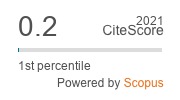Graph Theory's Applications In Real-World
Abstract
Mathematics is important in many domains, and in mathematics itself, graph theory has become a significant topic with many applications in structural modelling. Graph theory originated in 1735 as a solution to the Königsberg Bridge historical problem and has since grown into a broad topic that provides insights into how items or technologies are arranged and connected, enabling advancements in a variety of fields. Effective route planning is essential for companies and sectors in today's environment, impacting critical elements such as product distribution. Graph theory offers fundamental principles and techniques to tackle these issues, providing workable solutions that maximise resource allocation and improve operational effectiveness. In order to clarify the fundamental ideas of graph theory, this paper will introduce a variety of graph types together with their definitions and essential ideas. Our goal is to demonstrate the usefulness and practicality of graph theory through an extensive investigation. We hope to show how graph theory is a useful framework for problem solving and decision making in a variety of domains by showcasing the many applications across different fields. Through our study, we have discovered a number of graph types that are essential to many important real-world applications. We hope to demonstrate the flexibility and usefulness of graph theory by offering a clear knowledge of these graph types and their theoretical foundations. By providing this thorough introduction, we hope to highlight the value of graph theory as an effective tool for describing and evaluating complex systems, which will promote creativity and progress in a variety of domains.




